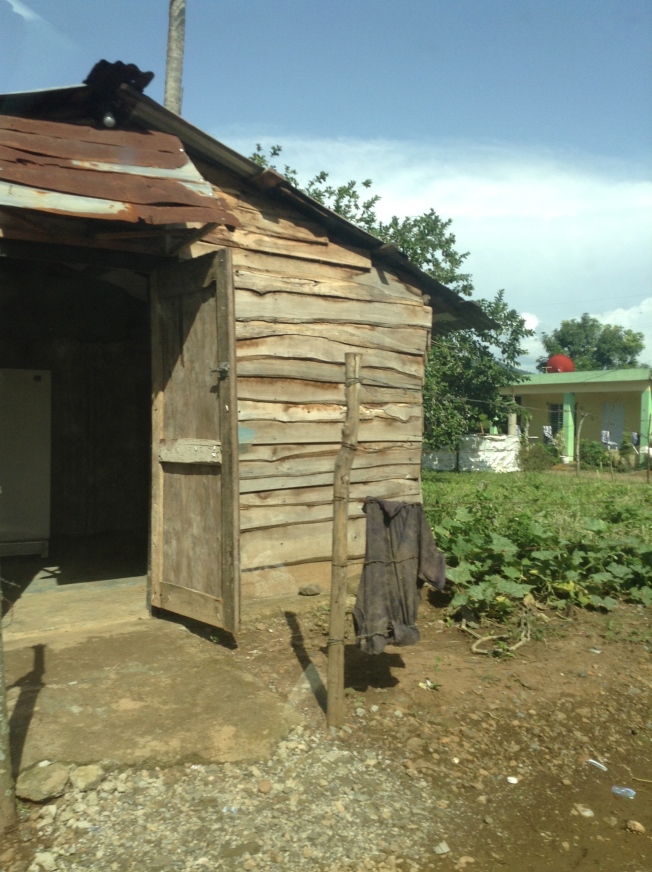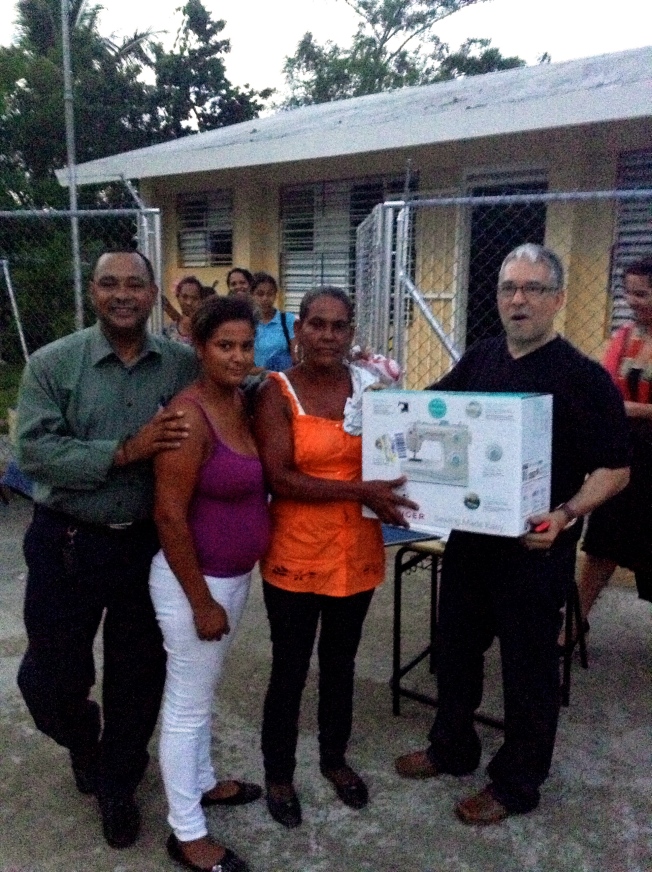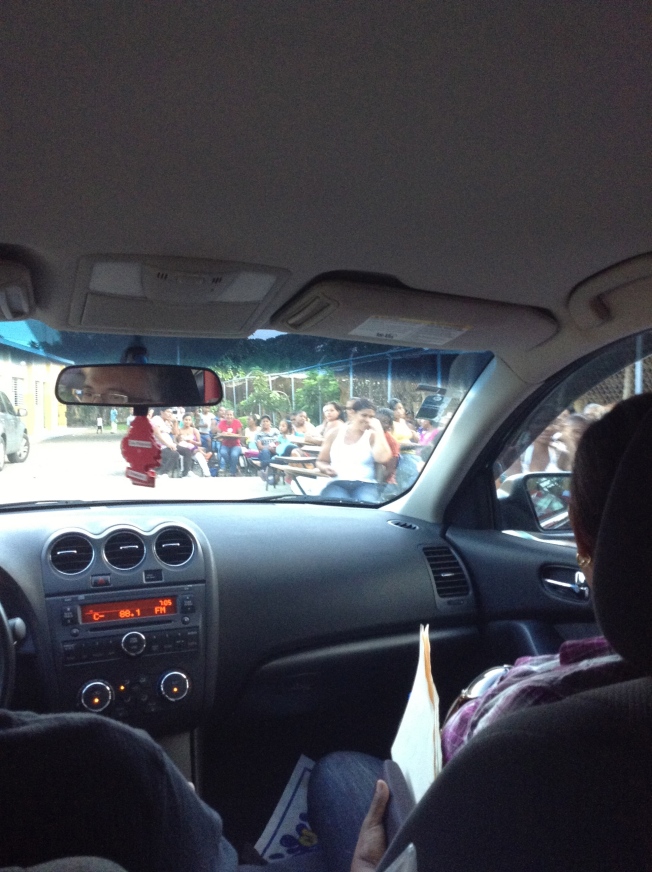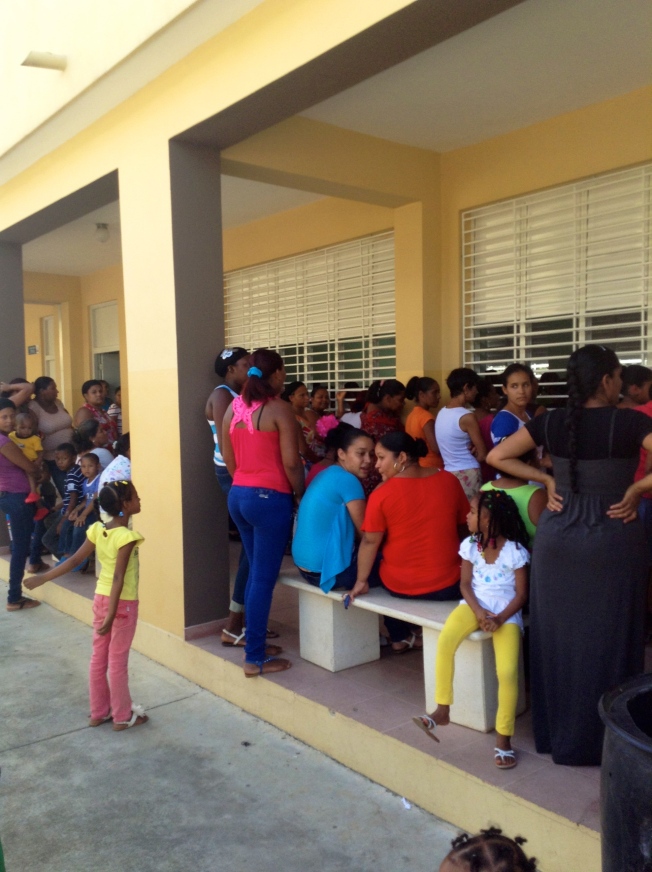Promoting Economic Empowerment for Battered Women
Lead Researcher ~ Dr. Vilma Caban-Vazquez, Ed.D

Art by Tanya Torres
http://www.tanyatorres.com
CLICK HERE FOR EXECUTIVE FINAL REPORT
FOREWORD
As the only daughter of a battered Latina immigrant from Puerto Rico, I witnessed how my mother Maria suffered as a victim of Domestic Violence. Perhaps this is where I began fine-tuning my advocacy lens. It was in the midst of these turbulent moments where sparks took the form of my heart’s desire to share the urgent call for helping battered women. Regrettably, there are unsettling memories which at times tend to resurface. However, they activate this researcher’s deep set longing to examine the extent of how my mother Maria suffered. When I was young, my mother would urge me not to say anything and to keep “family problems”… PRIVATE. She would advise me that it’s best not get other people involved in your marital problems. As a result, Maria dealt with the conflicting pain of staying in an abusive relationship for the sake of her family and children. She carried this pain for over 25 years.
This researcher had a tough secret to keep. I wondered how many other women and children actually walk around with haunting memories of domestic violence or “family problems” on their heavy hearts. In April 2012, right before my mother lost her battle with cancer, I vowed at my mother’s deathbed that I would use her story to… break the silence… and break the cycle of domestic violence.
As an advocacy researcher, in the summer of 2012, I had the honor of launching my first domestic violence research study in the Dominican Republic. The Latina Project: Breaking the Silence…Breaking the Cycle . It was my way of establishing a research footprint on an elusive phenomena that maintains an emotional, spiritual, physical, and economic stranglehold on many Latino communites.
Initially, I was inclined to reach out to my mom’s hometown in Puerto Rico, but after much introspection, I realized that personally it was too soon to examine this challenging topic so painfully close to home. At this juncture, it was best to examine the broader issue of domestic violence. I recognized that it was important to widen the aperture of this obscure topic and gain a stronger understanding of the issues related to domestic violence in many Latino communities.
Ultimately, this qualitative researcher elected to pursue a replicable course of study that could help her examine the underlying universal themes that are evident in domestic violence in Latino communities. I selected a Caribbean sister community not far away from Puerto Rico…it was Columbus’ first discovery… and symbolically it would serve as this researcher’s first discovery of domestic violence. It was the captivating country of the Dominican Republic.
NARRATIVE ANALYSIS OF RESEARCH FINDINGS
Based on the data collection and analysis methods discussed above, Dr. Caban-Vazquez was able to identify several re-occurring themes from the interviews. These central themes can be grouped into the following categories of participants’ needs: (a) economic factors, (b) women empowerment, (c) Victims’ patterns (d) social-emotional factors, and (e) raising community awareness.
THEME 1: ECONOMIC FACTORS
The majority of the battered women interviewed communicated their dire need for economic resources that would enable them to leave their abusive relationships. Many of the women expressed their desire to successfully seek and secure employment outside of Bonao. Upon further examination, employment opportunities are extremely limited in this rural community. Many women expressed that they choose to remain in their abusive relationship because they don’t want to disrupt their children’s education by moving away and not having any economic resources to ensure that their children attend school. They selflessly chose to stay so that their children could at least have a better chance of attending school. The majority of the local men are the sole financial providers of the home. In light of the economic situation in their rural communities, if the battered women resolved to leave their abusive partners, these women would financially struggle to purchase the costly school uniforms that their children are required to have to attend school. Many of the women hoped that there would be some form of career training available to the women of Bonao that would open some economic options.
THEME 2: WOMEN EMPOWERMENT
More than half of the research participants wish they had a women’s community center where they may attend more “chalas” or educational workshops. They believe that this community strategy would increase the awareness level about domestic violence in their community. Prior to Dr. Caban-Vazquez informational session about domestic violence laws with the participants, the majority of the battered women communicated in their interviews that they were not familiar with the Domestic Violence Law No. 24:97. Some women shared that if they knew where to go and get a legal advocate, they would feel more comfortable trying to leave their abusive partner.
THEME 3: BREAKING FREE FROM AN ABUSER
A closer examination revealed that less than 25 percent of the participants interviewed in multiple research forums were actually able to break free from their abusive partner. Regrettably, half of the women that broke free from the abuser eventually returned to their abusive partner. In view of this shift, only 12 percent of the study participants were able to remain away from their former abusive partner. The researcher realized that she would need to probe further and plan future focus group interviews and one-to-one interviews to better understand the complex social forces that were shaping the womens’ choice to come back to an abusive relationship.
THEME 4: SOCIAL EMOTIONAL FACTORS
Focus group interviews (n=15) revealed that many of the women felt ashamed about their abusive situation. They expressed great difficulty about sharing their situation with other women in their community for fear of judgement. Others expressed that they believe one of the reasons why the community is tolerate of domestic violence may be due to the believe of a “man needs to be a man”. Some women shared that some people have expressed that if the men don’t behave this way and put their women in their place, then the women will get out of control.
Several older women shared their belief that the cycle of domestic violence in their community continues to flourish. They discretely noted several of the young women in the town who are dating or engaged to an abusive boyfriend. These older battered women earnestly conveyed their concern for these young women. The vicious cycle of domestic violence was quite evident in this community.
THEME 5: RAISING COMMUNITY AWARENESS
Many of the women felt it was necessary to involve the men in the community awareness initiatives centered on domestic violence in Bonao. Some of the women suggested a faith-based counseling group for abusers with a local spiritual leader, pastor or priest. They expressed that it was part of the churches responsibility to address the issue of how the church congregants are also abusers of this wifes.
IMPLICATIONS FOR FURTHER STUDY
Based of the multiple themes that were revealed in this preliminary research study, this researcher considered potential areas for future study. This researcher recommends that future research should focus on the economic empowerment theme that was raised by the majority of the battered women. This form of future research may be helpful for other rural Latino communities that face this universal economic obstacle. Another area of future study can center on how various community stakeholders can raise community awareness on the issue of domestic violence (Johnson, 2003). The application of this future research can greatly affect social change within the Latino community. It can also inform government and social agency policy that is designed for the educational and economic empowerment of various communities.
BATTERED WOMEN ECONOMIC EMPOWERMENT PROJECT SCHOOL UNIFORM COOPERATIVE
Together one step at a time, we can break the silence and the cycle that have kept so many women and children oppressed by their abusers. With the generous support of Social Changers without Borders and the wonderful support that Dr. Caban-Vazquez and her research delegates received, they were able to set a course for a second year of research and technical support.
This lead researcher and her team traveled back and worked with a core group of the battered Latinas in Bonao. Using a secure lottery system, 10 out of the 50 women studied became part of an economic empowerment project that will serve as a pilot for the 2013/2014 study. With this plan, they will be able to directly help 10 of the 2012 research participants. These women will become part of a Self Help Group (SHG) that will create a School Uniform Cooperative (Davies, 2001). This economic empowerment project will enable and equip the domestic violence survivors to sew and sell school uniforms in and outside of their small town of Bonao, DR. This technical support is a direct result of the key findings shared by the victims of the study. The goal for offering this empowering self help group model is to ultimately release the women from the oppressive and economic hold of their abusive husbands or domestic partners (Allen, 2004; Rios, 2007). Research findings from the 2012 study showed that many of the women selflessly remained with their abusers to better improve their children’s odds of remaining in school. Since the men were the sole decision-maker in managing finance, the women feared that they would struggle to purchase the costly school uniforms without any career training or employment options.
This summer, our direct technical and economic support drastically empowered many brave women to take hold of their destiny and develop a school uniform micro-enterprise. As a result, they will now gain the economic leverage they need to provide their children, and ultimately their community, with a vital educational resource and opportunity.
CERTIFIED TRAINING & APPRENTICESHIP
Research-proven methods on effective practices and training will inform the direction of this rural community-based project (Perkins, 2006; UN, 2001). The women will receive certified training from a team of seamstresses in the field. Furthermore, they will receive support from local merchants to sell and promote the women’s school uniforms. The lead researcher’s vision of expanding this initiative can be supported by proceeds from additional fundraising events. This may offer the women an opportunity to establish an apprentice program wherein the study participants will “reach one…and teach one”.
Dr. Caban-Vazquez recognizes the great potential of replicating this form of empowerment work across many Latino rural communities. The findings from 2013/2014 economic empowerment pilot will help to establish field-tested and proven strategies for developing sustainable community outreach.
PICTURES TELL THE STORY
Our community outreach efforts reached approximately 800 women across different hamlets in the Province of Alta Gracia in the Dominican Republic. It was an honor to be greeted by hundreds of women as they sought advice on dealing with the epidemic of domestic violence in their communities.
ARTIST TANYA TORRES OFFERS HER GIFT OF INSPIRATION AND HOPE:
The lead researcher would like to thank the talented Latina artist Tanya Torres for her artistic contribution. Tanya Torres has extended permission for Dr. Caban-Vazquez to use her inspirational and cultural iconic figure—Cacibayagua: Taina Goddess— in any promotional literature and research reports sharing the worked centered on The Latina Domestic Violence Research Project. In August 2013, when the research team travels back to Bonao, Dr. Caban-Vazquez will deliver a special inspirational gift especially designed to inspire the 10 domestic violence victims (Appendix D) Mrs. Torres lovingly hand–crafted unique wearable art necklaces with the inspirational image of Cacibayagua— the mythical Taina Goddess. Traditional Dominican folklore describes how Cacibayagua is the original life source of the indigenous Taino Indians that emerged from her beautiful cave. The inspirational intention behind sharing this gift is to encourage the women. In the face of adversity and their personal decision to renounce the economic stranglehold of their abusers, these empowered women can recall the legend of Cacibayagua. The necklace signifies their promise and legacy as Latina women and descendants of the rich Taino culture. It is a symbolic reminder to tap into the spiritual strength of their inner Taina goddess. This artistic gift serves as a beautiful and concrete reminder of their legacy and the promise of their destiny as “empowered” women and not “beaten” women. http://tanyatorres.com













